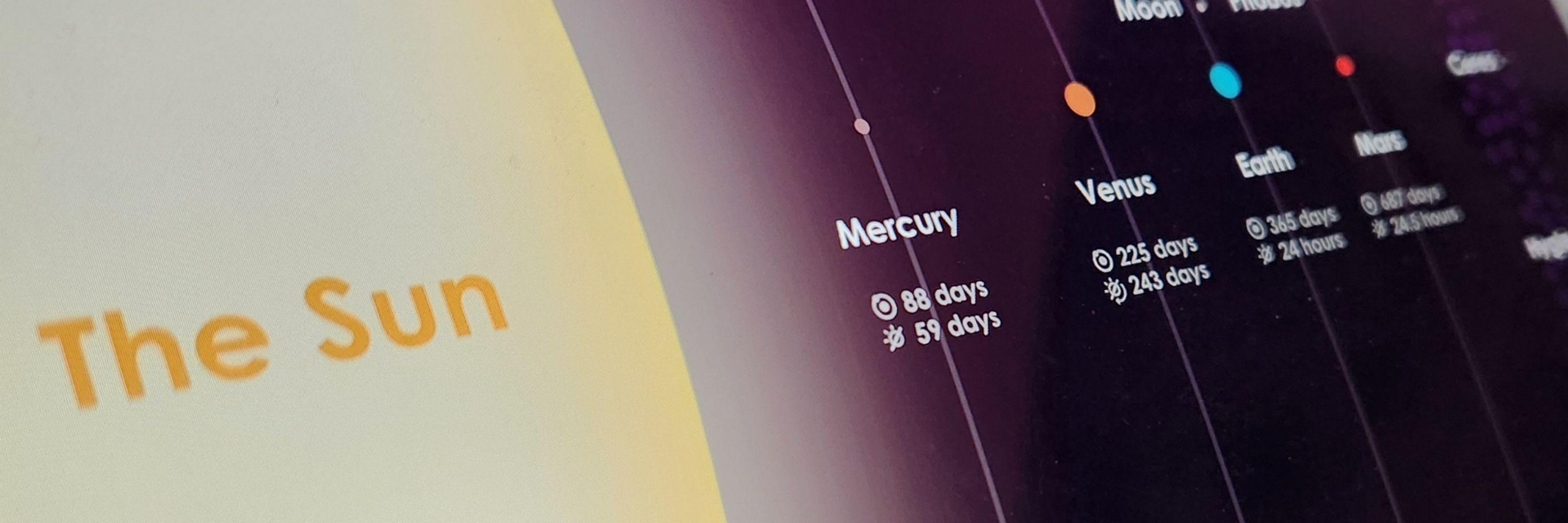
Explore our stellar neighborhood in 3D: https://starcarta.app
Let's go through some systems mentioned, starting w/Trappist-1.
A 7-planet system whose worlds all orbit within 10% of the Earth-Sun distance. starcarta.app/o/jkSG

Let's go through some systems mentioned, starting w/Trappist-1.
A 7-planet system whose worlds all orbit within 10% of the Earth-Sun distance. starcarta.app/o/jkSG
#space #starcarta #indiedev
starcarta.app/o/gNnB

#space #starcarta #indiedev
starcarta.app/o/gNnB
✨ New:
- Star focus
Stars in multiple systems can be far apart making it difficult to zoom in. Now by clicking on a Star’s name, you can zoom in on that star and its planets. Clicking the Star’s name again toggles you back to the the System.
#space #astronomy #indiedev
✨ New:
- Star focus
Stars in multiple systems can be far apart making it difficult to zoom in. Now by clicking on a Star’s name, you can zoom in on that star and its planets. Clicking the Star’s name again toggles you back to the the System.
#space #astronomy #indiedev
✨ New:
- Tags!
- Highlight Systems by Tag.
- Added 1 AU graph circle to all Systems with planets to show scale. (1/4)
#Starcarta #indiedev #astronomy #space starcarta.app

✨ New:
- Tags!
- Highlight Systems by Tag.
- Added 1 AU graph circle to all Systems with planets to show scale. (1/4)
#Starcarta #indiedev #astronomy #space starcarta.app
starcarta.app/o/CXJPq

starcarta.app/o/CXJPq
starcarta.app/o/B
starcarta.app/o/B

starcarta.app/o/CJCWm

starcarta.app/o/CJCWm
starcarta.app/o/hkBp

starcarta.app/o/hkBp

Now w/Habitable Zones! So what is a star’s HZ? It’s the space around a star where a rocky planet can have surface water, assuming atmosphere & sufficient gravity. Avoiding either runaway greenhouses or where CO₂ can't keep the planet sufficiently warm. #space #starcarta (1/2)

Now w/Habitable Zones! So what is a star’s HZ? It’s the space around a star where a rocky planet can have surface water, assuming atmosphere & sufficient gravity. Avoiding either runaway greenhouses or where CO₂ can't keep the planet sufficiently warm. #space #starcarta (1/2)


- URL now shows the system you're with a short code in for easy sharing.
System of day: Epsilon Tauri!
starcarta.app/?o=RvdN
With a great view of the star packed Hyades cluster, is the huge & super bright G-star Ain and planet Amateru. #starcarta #astronomy

- URL now shows the system you're with a short code in for easy sharing.
System of day: Epsilon Tauri!
starcarta.app/?o=RvdN
With a great view of the star packed Hyades cluster, is the huge & super bright G-star Ain and planet Amateru. #starcarta #astronomy
(1/6) #space #starcarta #asronomy

(1/6) #space #starcarta #asronomy


🌌 starcarta.app
#Starcarta #webgl #space #threejs #indiedev

🌌 starcarta.app
#Starcarta #webgl #space #threejs #indiedev
🌐 overvieweffekt.com
#overvieweffect #datavisualization #astronomy

🌐 overvieweffekt.com
#overvieweffect #datavisualization #astronomy
#Starcarta #scifi #space #indiedev
#Starcarta #scifi #space #indiedev

🛰️ Starcarta Update 1.05 is here!
✨ New:
-New Name!
-Home toggle: find the Sun’s position from anywhere.
-Hover-to-focus: float your mouse over a star name to center on it.
With the new name we also have a new home: starcarta.app! #Starcarta #indiedev #astronomy #space

🛰️ Starcarta Update 1.05 is here!
✨ New:
-New Name!
-Home toggle: find the Sun’s position from anywhere.
-Hover-to-focus: float your mouse over a star name to center on it.
With the new name we also have a new home: starcarta.app! #Starcarta #indiedev #astronomy #space

